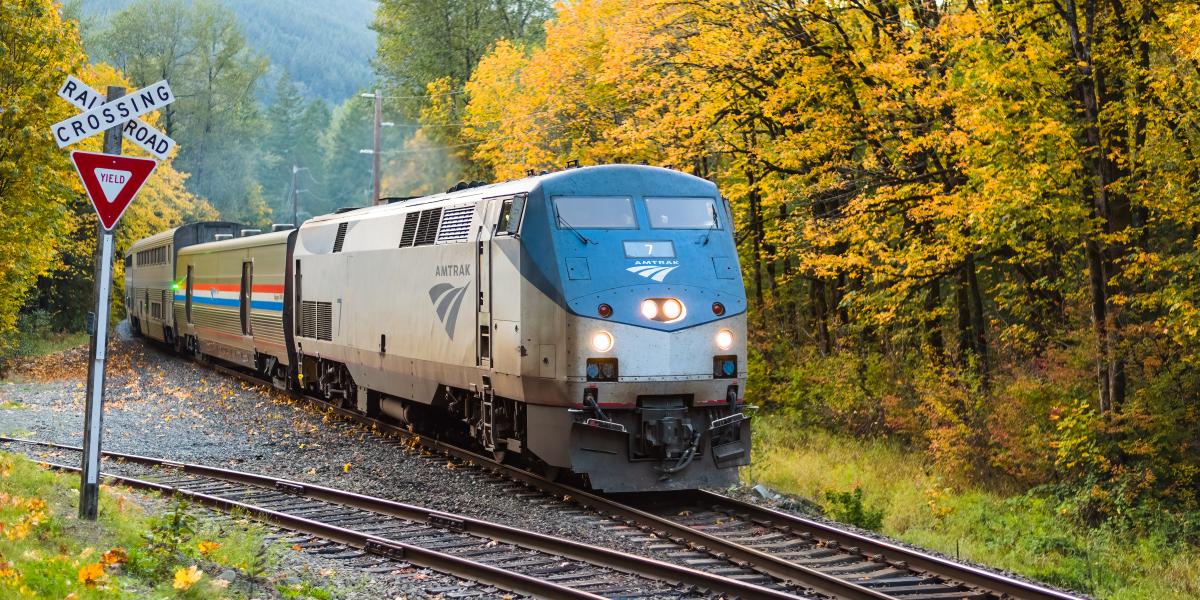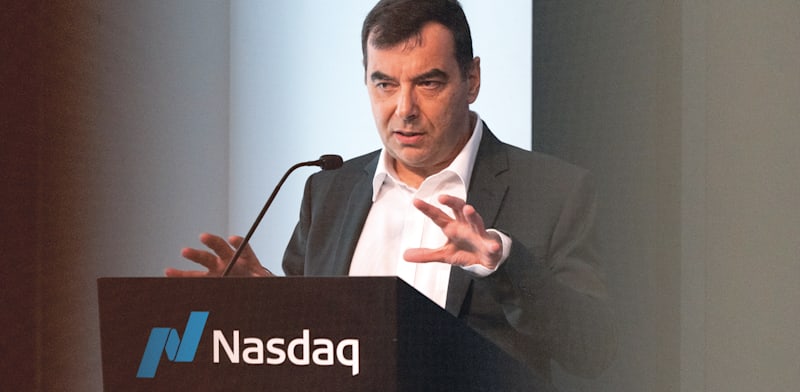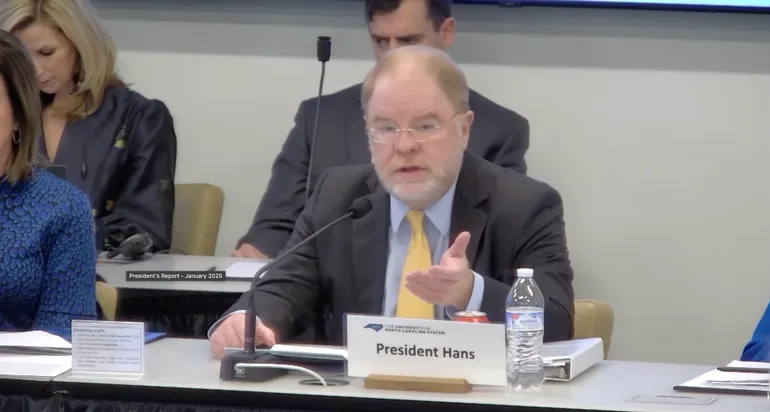Remember the glamorous days of train travel? Like the 20th Century Limited connecting New York and Chicago? In 1928, the popular 20th Century Limited exemplified the profitability of passenger rail. Yet, times have changed, and America’s passenger trains have lost money since 1946. With the invention of air conditioning, travel habits shifted to favor north-south routes.
For example, Amtrak’s east-west routes lost over $560 million in FY2024 alone. This contrasts with the Auto Train (Virginia to Florida), which generated a profit of $6.6 million. Fewer people are riding east-west trains (passenger-miles are down 22 percent since 2011). In contrast, north-south routes have seen an 8 percent bump.
Airlines are seeing the same trend: New York to Miami is booming, while New York to Los Angeles is losing steam. In the fourth quarter of 2023, the New York to Miami route saw 25,263 daily passengers—a 13 percent increase from 2019. Meanwhile, the New York to Los Angeles route saw only 13,213 daily passengers—a 10 percent drop.
Despite this, Amtrak maintains that it is “on-track to reach operational profitability.” Yet, a closer examination of its financial reporting reveals a troubling picture. While Amtrak reported a $705.2 million loss for FY2024, this figure excludes:
$966.2 million in depreciation$447.3 million in “Project Related Expenses”$314.1 million in state subsidies, which it classified as revenue$26.9 million in Office of Inspector General funding
Figure 1: Transportation subsidies per passenger-mile, 2022.
In 2021, Congress passed the Infrastructure Investment and Jobs Act. It allocated a monumental $66 billion to bolster passenger rail. Even with this support, Amtrak’s losses soared from $1.12 billion in FY2019 to $2.12 billion by FY2024.
By FY2024, Amtrak’s capital subsidies reached $4.46 billion. Meanwhile, its cash “operating” subsidies totaled $1.15 billion. This bait-and-switch enables Amtrak to paint a favorable view of its financial health. Yet, Amtrak still needs more subsidies than ever to keep chugging along.
If Amtrak was serious about fiscal responsibility, it would be discontinuing unprofitable routes. Instead, Amtrak is blaming its financial woes on long-distance routes. Yet, Amtrak’s state-supported routes (under 750 miles) are doing even worse. With more people working from home, the trains are emptier, dropping from a 41 percent load factor in FY2019 to 38 percent by FY2024. This is much lower than the 57 percent load factor of Amtrak’s long-distance trains.
Amtrak reported a $251.5 million loss for state-supported routes in FY2024. Yet, with state subsidies included, the true loss hits $565.6 million. This is a 94 percent increase from the $291.7 million lost in FY2019.
Here are some examples of how Amtrak’s shorter routes are squandering taxpayer money:
The Sacramento to San Jose route runs 12 times a day, but often with 200 empty seats. With only 28 percent of the seats filled, that route alone lost over $45 million in FY2024.Amtrak’s new European high-speed Acela trains—which cost $2.45 billion—are defective. As a result, Acela ridership has dropped by 9.5 percent since FY2019. In contrast, the ridership of slower Northeast Regional trains has grown by 31 percent.Amtrak spent $2 billion over 14 years to increase the speed of its trains from Chicago to St. Louis from 79 mph to 110 mph. Despite this, the average speed only went up by 5 mph. Even with the “faster” trains, there are only a few more passengers aboard each train.Amtrak spent $181.2 million on a shortcut between Seattle and Portland, which opened in 2017. Its selling point was to shave 10 minutes off the trip. Yet, the first train to use it derailed because of speeding, killing three people and injuring 65.Telework has become faster, cheaper, and more convenient than commuting. In fact, remote workers are saving about 72 minutes every day that they would otherwise spend on the road. This change not only benefits individuals but also reduces pollution by up to 54 percent. As a result, the need for short-distance trains has diminished.
Figure 2: Approximate Seattle – Los Angeles ticket revenue per car-mile, FY2022.

So, if short-distance trains don’t work, then what about long-distance trains?
Amtrak’s long-distance trains have two classes: coaches and sleeping cars. Sleeping cars offer private rooms at higher fares and are more profitable. Coaches earn less revenue because passengers must sleep in their seats. Take the sleeping cars operating between Seattle and Los Angeles, for instance. They earned $11.97 per car-mile. In stark contrast, the coaches earned only $6.98 per car-mile.
Australian long-distance trains—such as the Ghan—don’t rely on subsidies. The reason? They only offer sleeping cars, no coach seats. When the Ghan did offer coach seats, it lost buckets of money. Yet, it became profitable in 2016 after eliminating coach services.
Amtrak’s sleeping car fares are on par with those from 1946, when trains didn’t rely on subsidies. Yet, Amtrak is struggling to fill coach seats even when adjusted prices are 80 percent lower than what they were in 1946. In fact, Amtrak is losing so much money that it would be cheaper to buy each rider a plane ticket. To illustrate, the average airfare in 2024 was around $0.23 per passenger-mile. This is much lower than Amtrak’s FY2024 subsidies of $0.91 per passenger-mile.
Figure 3: The Hoboken plan could enable trains to be profitable without either capital or operating subsidies.

Amtrak could run profitable, unsubsidized trains if it only operated sleeping cars. Here are some all-sleeping car routes that could be a game-changer:
Champion: Hoboken to Miami via Charleston, operating every four days.Texas Chief: Hoboken to Houston via Chicago and Kansas City, operating every four days.Panoramic: Hoboken to Los Angeles via Chicago and Denver, operating every four days.West Coast: Vancouver to Los Angeles via Oakland, operating every four days.
These scenic routes could offer a unique travel experience using the tracks that already exist. The problem is, Amtrak’s subsidies create a political incentive to keep coaches operating. With a loss of $2.12 billion in FY2024, Amtrak is turning into a bottomless money pit.
Why hasn’t Congress considered eliminating the subsidies?
Amtrak’s advocates often point to highway “subsidies” to justify the money-losing trains. Yet, Amtrak guzzles about 39 times more subsidies per passenger-mile than highways do.
Amtrak likes to tout “record ridership,” but that number doesn’t tell the whole story. It doesn’t reflect how far each passenger is traveling. In FY2024, Amtrak transported only 6.54 billion passenger-miles, a decrease of 3.40 percent since 2013.
Amtrak once had a webpage about the environmental benefits of train travel, but it’s now gone. Why? It’s likely because comparing trains to cars was an oversimplification. This was like saying all vegetables are good for you. Some of Amtrak’s routes are efficient and could thrive without subsidies. Yet, Amtrak can’t focus on those routes because Congress might slash its funding if it did. For other routes, cars, buses, or even airplanes might actually be the greener choice.
Another common argument is that highways and airports are bursting at the seams. This implies that we “need” trains to relieve pressure. Yet, United Airlines is limiting its growth to match supply with demand. If Amtrak had done this, it wouldn’t be selling tickets for $5 from Washington to Baltimore. Even at these rock-bottom prices, 47 percent of Amtrak’s seats are empty.
Amtrak says that rail “privatization” in the UK didn’t work. Politicians were still designing routes, even though private companies were operating the trains. These big companies pocketed taxpayer money in the form of infrastructure subsidies. For this reason, the UK is now switching back to government operation of train services.
Instead of this, Congress should cut Amtrak’s capital and operating subsidies to zero. Once Amtrak isn’t relying on subsidies, it can focus on the routes that could actually make money. Brightline Florida—a privately-owned train service—began operations in 2023. Rocky Mountaineer offers amazing train trips through the Rockies without taxpayer subsidies. If Amtrak can’t figure out how to operate trains without subsidies, then someone else will.

























